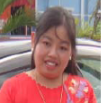International Journal of Modern Education and Computer Science (IJMECS)
IJMECS Vol. 4, No. 1, 8 Jan. 2012
Cover page and Table of Contents: PDF (size: 260KB)
Perceived Gender Classification from Face Images
Full Text (PDF, 260KB), PP.12-18
Views: 0 Downloads: 0
Author(s)
Index Terms
Face Recognition, Facial Expression, Gender Classification, Feature Extraction, Eigen faces
Abstract
Perceiving human faces and modeling the distinctive features of human faces that contribute most towards face recognition are some of the challenges faced by computer vision and psychophysics researchers. There are many methods have been proposed in the literature for the facial features and gender classification. However, all of them have still disadvantage such as not complete reflection about face structure, face texture. The features set is applied to three different applications: face recognition, facial expressions recognition and gender classification, which produced the reasonable results in all database. In this paper described two phases such as feature extraction phase and classification phase. The proposed system produced very promising recognition rates for our applications with same set of features and classifiers. The system is also real-time capable and automatic.
Cite This Paper
Hlaing Htake Khaung Tin, "Perceived Gender Classification from Face Images", International Journal of Modern Education and Computer Science (IJMECS), vol.4, no.1, pp.12-18, 2012. DOI:10.5815/ijmecs.2012.01.02
Reference
[1]B.Moghaddam and M. H. Yang, “Learning Gender with Support Faces”, IEEE Trans. Pattern Analysis and Machine Intelligence, vol. 24, no.5, pp.707-711, May 2002.
[2]Fleming MK and Cottrell GW, Categorization of faces using unsupervised feature extraction. In Proceedings of the International Joint Conference Neural Networks, vol. II (San Diego, CA, June 1990) pp. 65-70.
[3]Brown E and Perrett DI, What gives a face its gender? Perception 22 (1993) 829-840.
[4]Roberts T and Bruce V, Feature saliency in judging the sex and familiarity of faces. Perception 17 (1998) 475-481.
[5]Bruce V, Burton AM, Dench N, Hanna E, Healey P, Mason O, Coombes A, Fright R, and Linney A, Sex discrimination: How do we tell the difference between male and female faces? Perception 22 (1993) 131-152.
[6]Yamaguchi MK, Hirukawa T and Kanazawa S, Judgment of gender through facial parts. Perception 24 (1995) 563-575.
[7]Chellappa, R., Wilson, C.L. and Sirohey, S., “Human and machine recognition of faces: A Survey”, Proc. Of IEEE, Vol. 83, pp. 705-740 (1995).
[8]Choi, C., “Age change for predicting future faces”, Proc IEEE Int. Conf. On Fuzzy Systems, Vol. 3, pp.1603-1608 (1999).
[9]Gutta, S. And Wechler, H., “Gender and ethnic classification of human faces using hybrid classifiers,” Proc. Int. Joint Conference on Neural Networks, Vol. 6, pp.4084-4089 (1999).
[10]Changqin Huang, Wei Pan, and Shu Lin, “Gender Recognition with Face images Based on PARCONE Mode”, Proc. Of the Second Symposium International Computer Science and Computational technology (ISCSCT) pp.222-226 (2009).
[11]A.J.O’Toole, K.A.Deffene bacher, D.Valentin, K. McKee, D. Huff and H.Abdi. The Perception of Face Gender: the Role of Stimulus Structure in Recognition and Classification. Memory and Cognition, 26(1), 1998.
[12]V.N. Vapnik, Statistical learning theory, Wiley, New York, 1998.
[13]Elham Bagherian, Rahmita. Wirza.Rahmat and Nur Izura Udzir, “Extract of Facial Feature Poin”, International Journal of Computer Science and Network Security, Vol.9, No.1, January 2009.
[14]T. Kanade, Computer Recongition of Human faces Basel and Stuttgart: Birkhauser, 1997.
[15]A.Yuille, D. Cohen, and P. Hallinan, “Facial feature extraction from faces using deformable templates”, Proc. IEEE Computer Soc. Conf. On Computer Vision and Pattern Recognition, pp. 104-109, 1998.
[16]T.C. Chang, T.S. Huang, and C. Novak, “Facial feature extraction from color images”, Proceedings of the 12th IAPR International Conference on Pattern Recognition, vol.2, pp.39-43, Oct 1994.
[17]Y. Tian, T. Kanade, and J. F. Cohn, “Evaluation of Gabor wavelet-based facial action unit recognition in image sequences of increasing complexity”, Proceedings of the Fifth IEEE International Conference on Automatic Face and Gesture Recognition, pp.218-223, May 2002.
[18]Ji Zheng and Bao-Liang Lu, “A Support vector machine classifier with automatic confidence and its application to gender classification”, International Journal of Neurocomputing 74, 1926-1935, 2011.
[19]Ryotatsu Iga, Kyoko Izumi, Hisanori Hayashi, Gentaro Fukano, Tetsuya Ohtani, “A Gender and Age Estimation System from Face Images”, SICE Annual Conference in Fukui, August 4-6, 2003.
[20]M. J. Er, W.Chen, S.Wu “High Speed Face Recognition based on discrete cosine transform and RBF neural network” IEEE Trans on Neural Network vol. 16, no.3, pp. 679-691, 2007.
[21]Kwon, Y.H and da Vitoria Lobo, N. 1993. Locating Facial Features for Age Classification. In Proceedings of SPIE- The International Society for Optical Engineering Conference. 62-72.
[22]Y. Zhu and F.Cutu, “Face Detection using Half-Face Templats”.
[23]T.Okabe and Y. Sato, “Support Vector Machines for Object Recognition under varying Illuminnation Condtiions”.
[24]Hlaing Htake Khaung Tin, “Facial Extraction and Lip Tracking Using Facial Points”, International Journal of Computer Science, Engineering and Information Technology (IJCSEIT), Vol. 1, No. 1, March 2011.
[25]Sebe, N., Sun, Y., Bakker, E., Lew, M., Cohen, I., Huang, T.: “Towards authentic emotion recognition”, International Conference on Systems, Man and Cybernetics. (2004).
[26]Juan Bekios-Calfa, Jose M. Buenaposada, and Luis Baumela, “ Revisiting Linear Discriminant Tehcniques in Gender Recognition,” IEEE Transactions on Pattern Analysis and Machine Intelligence, vol. 33, no. 4, April 2011.
